IN THIS ISSUE
Get to Know Our SCW Faculty: Melissa Layne, M.Ed.
11 Hidden Benefits of Cycling | By: Asa B. Goldfrid
Two Moves For Total Core | By: Hedstrom Fitness
How To Give Stress & Anxiety A Physical Beating | By: LesMills
Cauliflower Mash! | By: Mindy Mylrea



In 1986, I was living in an apartment at the University of Alabama in Birmingham when my resident manager knocked and told me I needed to call home immediately. I knew something was wrong as my mom never called to check on her second born as she had already seen her first born leave the nest and fly. I didn’t know it at the time but that knock changed my life in more ways than one.
 My father had passed unexpectedly at the age of 48. Although my parents had been divorced for 10 years, I was still close to my father and couldn’t believe I didn’t have the chance to tell him I loved him and say goodbye. After the funeral I returned to UAB , continued to work on my medical technology degree but I became depressed and stayed in my apartment when not in class. My friends noticed and convinced me to give the recreation center’s aerobics class a try. So I reluctantly agreed and plodded to the cafeteria to see what I was getting myself into. That night changed my career choice in the short span of one hour.
My father had passed unexpectedly at the age of 48. Although my parents had been divorced for 10 years, I was still close to my father and couldn’t believe I didn’t have the chance to tell him I loved him and say goodbye. After the funeral I returned to UAB , continued to work on my medical technology degree but I became depressed and stayed in my apartment when not in class. My friends noticed and convinced me to give the recreation center’s aerobics class a try. So I reluctantly agreed and plodded to the cafeteria to see what I was getting myself into. That night changed my career choice in the short span of one hour.
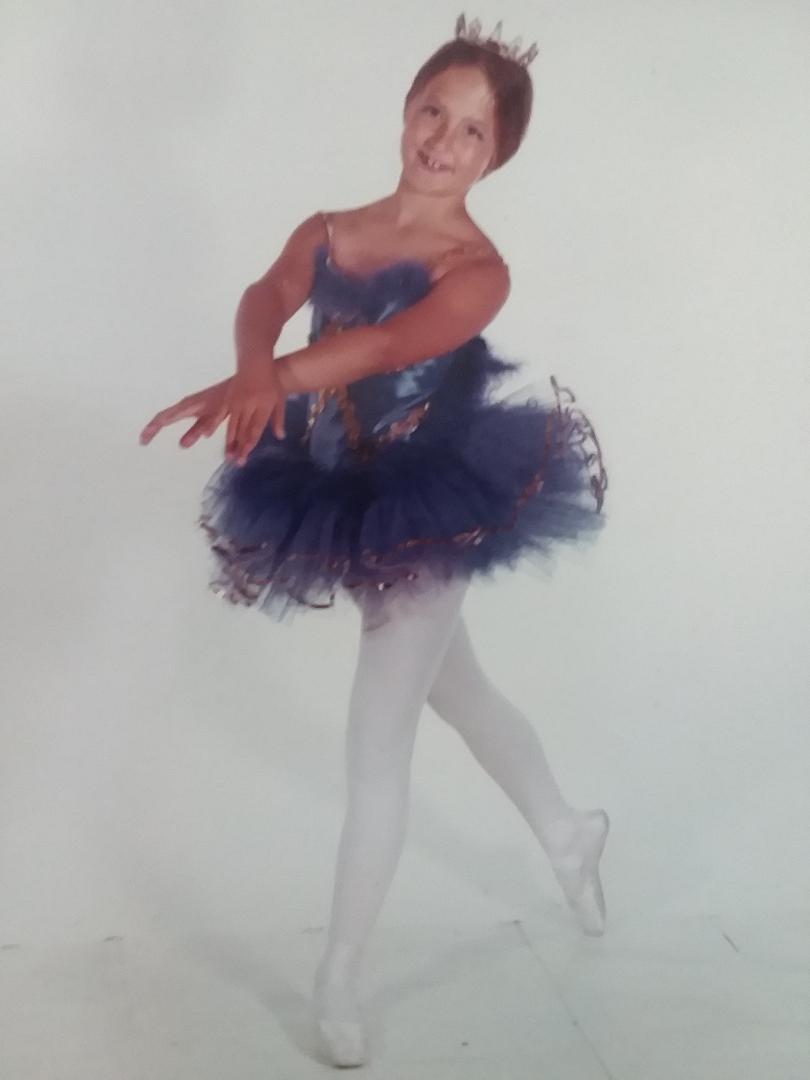 For 60 minutes I pounded my grief and anger on the cement floor while Paige screamed instructions over the record player scratching the lyrics to the movie Perfect. The only things that existed were high kicks, grapevines, jumping jacks, running in place and sweat. One night Paige wasn’t feeling well and asked if I would teach. I laughed. She tried again : “What if I still give instructions and you do the routine on the stage?” I thought for a minute and agreed. After all, I had been a dancer, gymnast, and figure skater in my youth and performed in front of people all the time. An hour later, this introvert was still on the stage; no panic attack.
For 60 minutes I pounded my grief and anger on the cement floor while Paige screamed instructions over the record player scratching the lyrics to the movie Perfect. The only things that existed were high kicks, grapevines, jumping jacks, running in place and sweat. One night Paige wasn’t feeling well and asked if I would teach. I laughed. She tried again : “What if I still give instructions and you do the routine on the stage?” I thought for a minute and agreed. After all, I had been a dancer, gymnast, and figure skater in my youth and performed in front of people all the time. An hour later, this introvert was still on the stage; no panic attack.
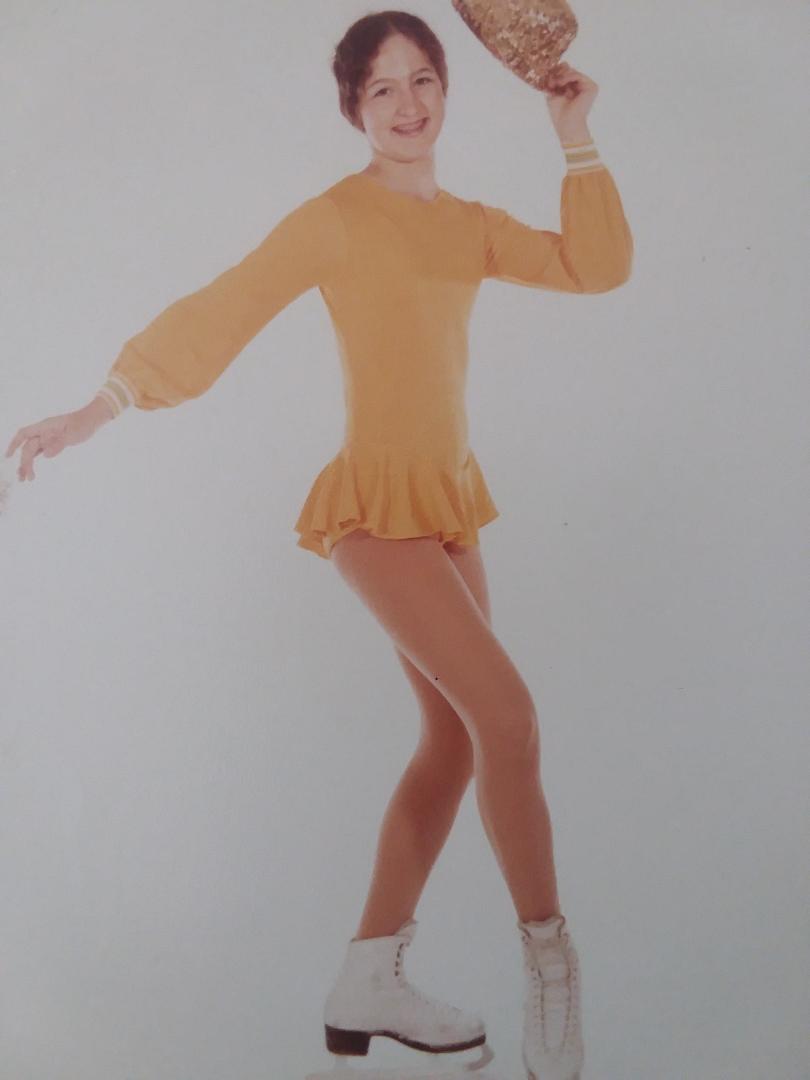 I went home for my final spring break and my friend Gayle and I went to a Saturday morning class at Living Well. At 9:05, the manager came in and apologized that the instructor had not showed. Gayle pointed at me and said “she can do it”. Well, I searched my car for a cassette tape that was fast enough and all I could find was Wham, Wake Me Up. I fell and twisted my ankle in the first five minutes but continued on and the hour flew by. Afterwards, Denny, the manager, offered me five dollars a class to teach at Living Well. I knew then that my college career had only just begun (again).
I went home for my final spring break and my friend Gayle and I went to a Saturday morning class at Living Well. At 9:05, the manager came in and apologized that the instructor had not showed. Gayle pointed at me and said “she can do it”. Well, I searched my car for a cassette tape that was fast enough and all I could find was Wham, Wake Me Up. I fell and twisted my ankle in the first five minutes but continued on and the hour flew by. Afterwards, Denny, the manager, offered me five dollars a class to teach at Living Well. I knew then that my college career had only just begun (again).
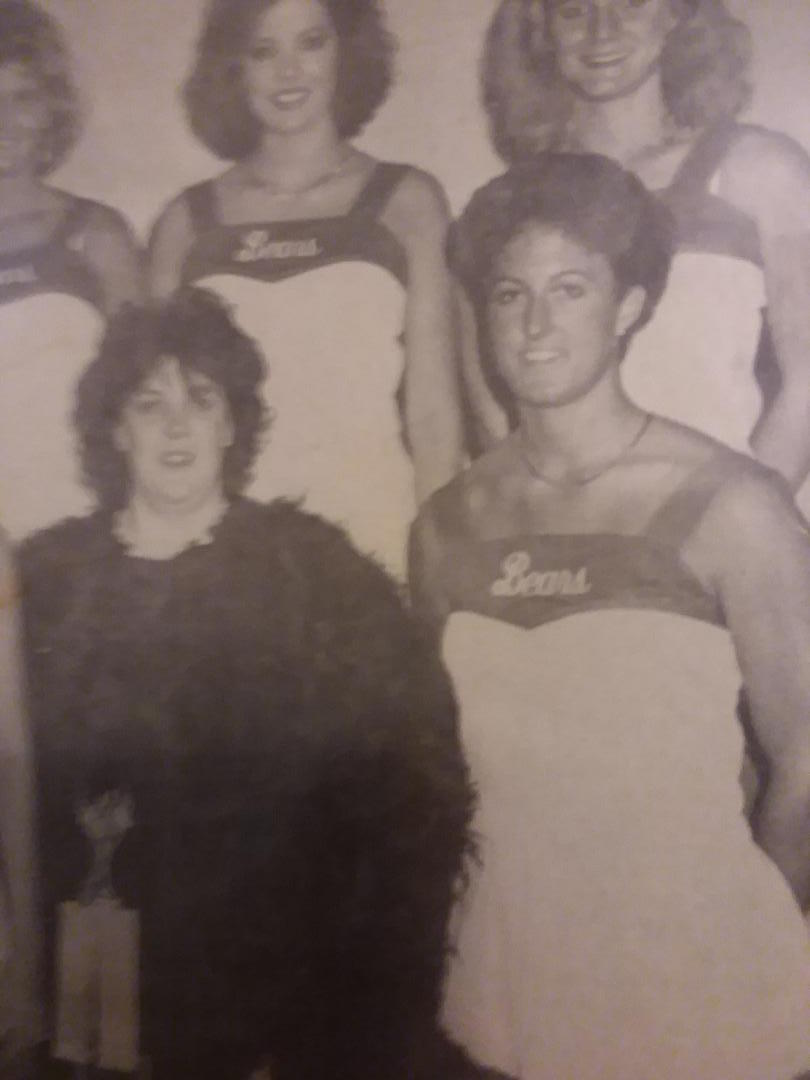 I earned a B.S. in Physical Education on a cheerleading scholarship and then completed my Master’s course work in exercise physiology at Auburn University while teaching group fitness as a graduate assistant. I wanted to see the world so I signed onto Royal Caribbean to teach group fitness. I quickly learned that this was not teaching at a fitness club with people who actually wanted to get in shape but instead wanted to dance with a cocktail in one hand. I returned to Auburn to work for an orthopedic surgeon assisting his physical therapist. Again, I learned that my calling involved healthy folks who wanted to get fit, not rehab an injury.
I earned a B.S. in Physical Education on a cheerleading scholarship and then completed my Master’s course work in exercise physiology at Auburn University while teaching group fitness as a graduate assistant. I wanted to see the world so I signed onto Royal Caribbean to teach group fitness. I quickly learned that this was not teaching at a fitness club with people who actually wanted to get in shape but instead wanted to dance with a cocktail in one hand. I returned to Auburn to work for an orthopedic surgeon assisting his physical therapist. Again, I learned that my calling involved healthy folks who wanted to get fit, not rehab an injury.
 My mentor, Kenn Gugel, convinced me to come to Atlanta where I took a job at Bally’s which led to a management position with a corporate chain which led to my dream job as a regional fitness director at Sportslife, a premier chain of 7 clubs. It was in this period that I started applying to be a presenter for SCW because Sportslife hosted the convention and I had been attending for 10 years. I submitted a step video and received a rejection letter suggesting I reapply with a less popular format. The next year I applied with kickboxing; another similar rejection letter. The next year, last shot: an aquatics format. Nope, this goal just wasn’t meant to be. For 5 years, I was living the dream as Sportslife brought in Body Pump. I was selected as a Master Trainer and traveled extensively even after Crunch bought Sportslife, all the executive management was let go and I became an elementary PE teacher. I loved the travel and even managed to meet a man online who would eventually become my husband (then my ex). As Body Pump split into another product, traveling stopped. I was beginning a new job as a college professor at the University of North Georgia where I had moved with my husband when I received a call. The educational director for SCW, Shannon Fable, who I had plucked out of the Sportslife front row to mentor as an instructor years prior, wanted me to fill in for a presenter that had a conflict with the rest of the Manias that year. Could I teach a kickboxing, a step and a kickboxing on the step session for the remainder of the season? I excitedly said “Absolutely!” and hung up the phone thinking “What have I done?”
My mentor, Kenn Gugel, convinced me to come to Atlanta where I took a job at Bally’s which led to a management position with a corporate chain which led to my dream job as a regional fitness director at Sportslife, a premier chain of 7 clubs. It was in this period that I started applying to be a presenter for SCW because Sportslife hosted the convention and I had been attending for 10 years. I submitted a step video and received a rejection letter suggesting I reapply with a less popular format. The next year I applied with kickboxing; another similar rejection letter. The next year, last shot: an aquatics format. Nope, this goal just wasn’t meant to be. For 5 years, I was living the dream as Sportslife brought in Body Pump. I was selected as a Master Trainer and traveled extensively even after Crunch bought Sportslife, all the executive management was let go and I became an elementary PE teacher. I loved the travel and even managed to meet a man online who would eventually become my husband (then my ex). As Body Pump split into another product, traveling stopped. I was beginning a new job as a college professor at the University of North Georgia where I had moved with my husband when I received a call. The educational director for SCW, Shannon Fable, who I had plucked out of the Sportslife front row to mentor as an instructor years prior, wanted me to fill in for a presenter that had a conflict with the rest of the Manias that year. Could I teach a kickboxing, a step and a kickboxing on the step session for the remainder of the season? I excitedly said “Absolutely!” and hung up the phone thinking “What have I done?”
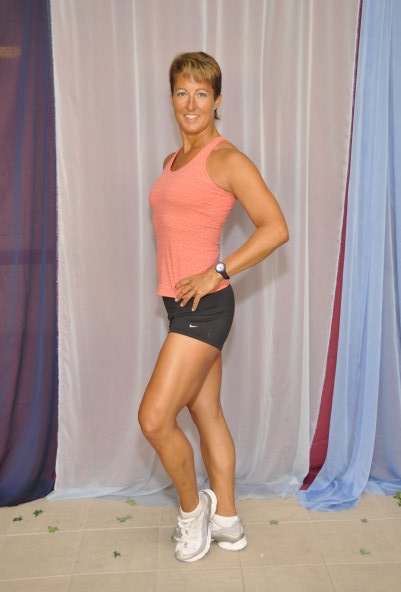 Well, the sessions rocked, SCW and Sara Kooperman invited me back and the introvert still hasn’t had a panic attack after 13 years. SCW Fitness Education has given me the confidence to stand up half naked in front of 90 strangers, tell them what to do, dressed in spandex, wearing a microphone and then ask for feedback. Crazy, huh? I also took a huge leap and wrote a book titled “Water Exercise”, published by Human Kinetics in 2015. I never had that goal but Human Kinetics never gave up on me and offered me a contract three times before I finally said “Sure, why not?”
Well, the sessions rocked, SCW and Sara Kooperman invited me back and the introvert still hasn’t had a panic attack after 13 years. SCW Fitness Education has given me the confidence to stand up half naked in front of 90 strangers, tell them what to do, dressed in spandex, wearing a microphone and then ask for feedback. Crazy, huh? I also took a huge leap and wrote a book titled “Water Exercise”, published by Human Kinetics in 2015. I never had that goal but Human Kinetics never gave up on me and offered me a contract three times before I finally said “Sure, why not?”
 When I am not traveling to the Manias and the other conventions that have opened for me because of SCW, I have found my passion teaching future fitness professionals to walk the walk, talk the talk, fake it till you make it and always know the bioenergetics behind an exercise program. I love my life as every morning my college students make me laugh, sometimes cry and always bang my head against the wall. My clients in my fitness classes are successfully achieving goals and once a month I get to see friends I have made across the country coming back to SCW Fitness Manias year after year. What else could I ask for besides more years on this earth doing what I love?
When I am not traveling to the Manias and the other conventions that have opened for me because of SCW, I have found my passion teaching future fitness professionals to walk the walk, talk the talk, fake it till you make it and always know the bioenergetics behind an exercise program. I love my life as every morning my college students make me laugh, sometimes cry and always bang my head against the wall. My clients in my fitness classes are successfully achieving goals and once a month I get to see friends I have made across the country coming back to SCW Fitness Manias year after year. What else could I ask for besides more years on this earth doing what I love?
 In closing, I offer the four lessons learned in this crazy life –
In closing, I offer the four lessons learned in this crazy life –
- Never give up no matter how many rejection letters you receive. If it’s meant to be, it will. Give it time.
- Take that leap of faith. What’s the worst that can happen?
- Always remember the people who helped you along the way. No matter how small the gesture seems at the time, it’s the little things that count.
- Find your passion (no matter how scary that stage is the first time) and never let go even though the passion evolves.
Stay healthy and happy, Melissa.
Sign up for Melissa Layne’s sessions at a MANIA® near you!
FLORIDA: www.scwfit.com/florida
ATLANTA: www.scwfit.com/atlanta
Whether you do it to lose weight, increase your FTP or just for fun, taking up indoor cycling could be one of the best decisions you ever make. Asaf B. Goldfrid, has over 20 years of hands-on experience in exercise and fitness with a special focus on cycling. Here are his top 11 hidden benefits of cycling, and why you need to join in on the fun today!
1. Cycling keeps you younger
Scientists at Stanford University have found that cycling regularly can protect your skin against the harmful effects of UV radiation and reduce the signs of ageing. Harley Street dermatologist Dr. Christopher Rowland Payne explains: “Increased circulation through cardio exercise delivers oxygen and nutrients to skin cells more effectively, while flushing harmful toxins out. Exercise also creates an ideal environment within the body to optimise collagen production, helping reduce the appearance of wrinkles and speed up the healing process.”
2. Increases your brain power
Researchers from the University of Illinois found that a 5% improvement in cardio-respiratory fitness from cycling led to an improvement of up to 15% in mental tests. That’s because cycling helps build new brain cells in the hippocampus — the region responsible for memory, which deteriorates from the age of 30.
“It boosts blood flow and oxygen to the brain, which fires and regenerates receptors, explaining how exercise helps ward off Alzheimer’s,” says the study’s author, Professor Arthur Kramer.
3. Keeps the Doctor away
Cycling is the way to keep the doctor at bay. “Moderate exercise makes immune cells more active, so they’re ready to fight off infection,” says Cath Collins, chief dietician at St George’s Hospital in London. Cycling regularly is a surefire way to keep illness at bay. According to research from the University of North Carolina, people who cycle for 30 minutes, five days a week take about half as many sick days as those who never get on a bike.
4. Longevity
King’s College London compared over 2,400 identical twins and found those who did the equivalent of just three 45-minute rides a week were nine years ‘biologically younger’ even after discounting other influences, such as body mass index (BMI) and smoking. “Those who exercise regularly are at significantly lower risk of cardiovascular disease, type two diabetes, all types of cancer, high blood pressure and obesity,” says Dr Lynn Cherkas, who conducted the research. “The body becomes much more efficient at defending itself and regenerating new cells.”
5. Makes healthier mums
According to research from Michigan University, mums-to-be who regularly exercise during pregnancy have an easier, less complicated labour, recover faster and enjoy better overall mood throughout the pregnancy. And that’s good news for dads-to-be too. The little one also has a 50% lower chance of becoming obese and enjoys better in-utero neurodevelopment.
Cycling while pregnant will help both mother and baby “There’s no doubt that moderate exercise such as cycling during pregnancy helps condition the mother and protect the foetus,” says Patrick O’Brien, a spokesman for the Royal College of Obstetricians and Gynaecologists. Always get the green light from your GP/ob-gyn before taking any exercise.
6. Keeps your heart strong
According to the British Heart Foundation, around 10,000 fatal heart attacks could be avoided each year if people kept themselves active.
Studies from Purdue University have shown that regular weekly cycling can cut your risk of heart disease by 50 percent. Cycling just 20 miles a week reduces your risk of heart disease to less than half that of those who take no exercise. A 45 min SCC ride averages about 15 miles. Get on the bike at least twice this week and protect the one organ you care about the most.
7. Cycling improves your sex life
The Health Professionals Follow-Up Study (HPFS), an all-male study that was designed to complement the all-female Nurses’ Health Study, which examines similar hypotheses, found that men who exercised 30 minutes a day were 41% less likely than sedentary men to experience erectile dysfunction. Exercise helps women, too: in one study, 20 minutes of cycling boosted women’s sexual arousal by 169%.
8. Changes your state of mind
You’re one ride away from feeling high. (!) No, really. Despite the name, ’Runner’s High’ has been proven beyond doubt to be applicable to all endurance athletes. University of Bonn neurologists visualised endorphins in the brains of 10 volunteers before and after a two-hour cardio session using a technique called Positive Emission Tomography (PET). Comparing the pre- and post-run scans, they found evidence of more opiate binding of the happy hormone in the frontal and limbic regions of the brain — areas known to be involved in emotional processing and dealing with stress. For the first time this study proves the physiological mechanism and the direct link between feelings of well-being and exercise.
9. Builds stronger relationships
We’re stronger together. It doesn’t matter if your paces aren’t perfectly matched, as long as you’re riding together. And it makes sense: exercise helps release feel-good hormones, so after your ride together don’t be surprised if you find yourself sharing the delicious Chocolate’s Lover superfoods shake.
10. Boosts your social life
The social side of riding could be doing you as much good as the actual exercise and health benefits. University of California researchers found socialising releases the hormone oxytocin, which buffers the ‘fight or flight ’ response.
A nine-year study from Harvard Medical School found those with the most friends cut the risk of an early death by more than 60 percent, reducing blood pressure and strengthening their immune system. The results were so significant that the researchers concluded not having close friends or confidante is as detrimental to your health as smoking or carrying extra weight. Add in our beautiful market terrace, complimentary coffee, superfoods shakes and fantastic sociable vibe, and you have the perfect daily city escape! A place to relax and unwind after a ride with friends, and an opportunity to make new ones too!
11. Easy on the joints
When you sit on a bike, you put your weight on a pair of bones in the pelvis called the Ischial Tuberosities, unlike walking, when you put your weight on your legs. That makes it good for anyone with joint pain or age-related stiffness. Decreased damage to joints is probably one of the most, if not the most, important reasons that people participate in fitness activities that are low impact in nature. Often, people are interested in losing weight, increasing their fitness level, or simply becoming more active, but a sore knee, hip or ankle restricts them from participating in typical exercises such as walking or jogging. Low impact fitness activities allow you to get the same benefits of more traditional forms of exercise without experiencing damage to these joints. Research has found that low impact fitness activities may actually promote the healing and recovery of damaged joints, thereby allowing you to return to higher impact activities in a timely manner.
Do you really need any other reason to come out for a ride?!
About the Author
Asaf B. Goldfrid has been the featured educational speaker at over 50 fitness-professional conventions across the US. He is an entrepreneur and innovative cyclist and is hailed as a fitness visionary leader. He brings over 20 years of hands-on experience to the fitness industry specifically in programme development and member experience.
Get Riding at a MANIA® close to home! scwfit.com/mania
FLORIDA: www.scwfit.com/florida
ATLANTA: www.scwfit.com/atlanta
When you think about core training, what comes to mind? Are crunches first on your “go to” list? Sure, crunches can be effective for training muscular endurance, but are spinal flexion exercises the best way to help you achieve your fitness goals? We know that spinal flexion is not a movement that we use often in daily living, and it is not possible to “spot reduce,” so perhaps we should consider other options!
If you are interested in improving function in activities of daily living, rotational core training will help you do just that. Training rotation offers carryover benefits to many activities and allows for greater ease of movement. In addition, if training for power is a priority, rotational exercises help the transfer of energy from the lower to upper body, and enhance performance in many sports.
The Surge® and Kamagon® Ball are excellent tools to train rotational core movements because they provide a dynamic training environment which offers an additional challenge. They are water filled products that use Hydro-Inertia® technology, requiring the engagement of the core muscles to stabilize the spine as the water shifts. There are unlimited options with these tools, but here are two of my favorites!
Kamagon® Ball Rear Lunge and Chop
Begin with the feet hip width apart, holding the handles of the Kamagon® Ball at chest level. Step back with the left leg into a rear lunge, bending each knee about 90 degrees. Simultaneously rotate the upper body to face right and bring the Kamagon® Ball to the right hip. Step forward and return to start position. Repeat for 8 to 12 repetitions, alternating sides each time.
Progression: Increase range of motion by extending the arms and swinging Kamagon® Ball further away from the body on the lunge and lifting the ball overhead when standing.
Surge® Alternating Front Lunge with Rotation
Start with the feet hip-width apart, holding the Surge® in front of the chest. Step forward with the right leg into a lunge, bending each knee about 90 degrees. Rotate the upper body to face right. Lift the Surge® overhead and rotate the torso back to center. Step back and return to start position. Repeat for 8 to 12 repetitions, alternating sides each time.
Progression: Lunge and rotate simultaneously and extend the elbows to bring the Surge® further away from the body.
FLORIDA: www.scwfit.com/florida
ATLANTA: www.scwfit.com/atlanta
MARGO WHITE: What exactly is stress and anxiety?
AMANDA REBAR: It depends on who you talk to. The way we picture it, stress and anxiety are both an emotional and physical state. It’s that feeling of activation, of having lots of energy, but a negative feeling is tied to that.
Some people tease stress and anxiety apart further, distinguishing between stress, which generally has a source and is a consequence of something happening in your life, and anxiety, which doesn’t necessarily have a cause – you just wake up feeling anxious, even though you can’t pinpoint why.
But overall the evidence is that physical activity reduces stress and anxiety, both psychologically – that feeling of negativity – as well as physiologically – that activated, energetic feeling, the gut feeling in your body.
In a way we’ve always known that – that if you’re stressed, you might go for a good walk.
In a sense you’re right. It’s a solution people have always had to reduce that overly activated feeling – to “burn some energy”. There are some theories that the feeling of stress, that feeling of activation can, as long as it’s not too negative, help motivate you. So that activated feeling motivates you to move, but people often want to burn off that feeling.
There are myriad theories about the physiological mechanisms that explain why exercise reduces stress and anxiety. If you google “exercise and stress” you’ll find, for instance, articles about how exercise releases endorphins. But that’s not true, is it?
The endorphin hypothesis has pretty much been debunked as an explanation for the mental health benefits of physical activity. But that’s not to say there aren’t neurotransmitter effects underlying the beneficial effects of exercise.
Research is pointing to a number of physiological explanations, such as how exercise promotes neurogenesis, or how exercise helps regulate what’s called the hypothalamic-pituitary adrenal (HPA) axis, the interaction of hypothalamus, the pituitary gland and the adrenal glands in our body, which controls reactions to stress.
Are you convinced?
The annoying part of this is that there are so many unanswered questions. It’s likely that the anxiety-reducing benefits of exercise are due to several mechanisms manifesting at a neurophysiological level – on a combination of neurotransmitters in the brain at a physiological level, but also psychological mechanisms.
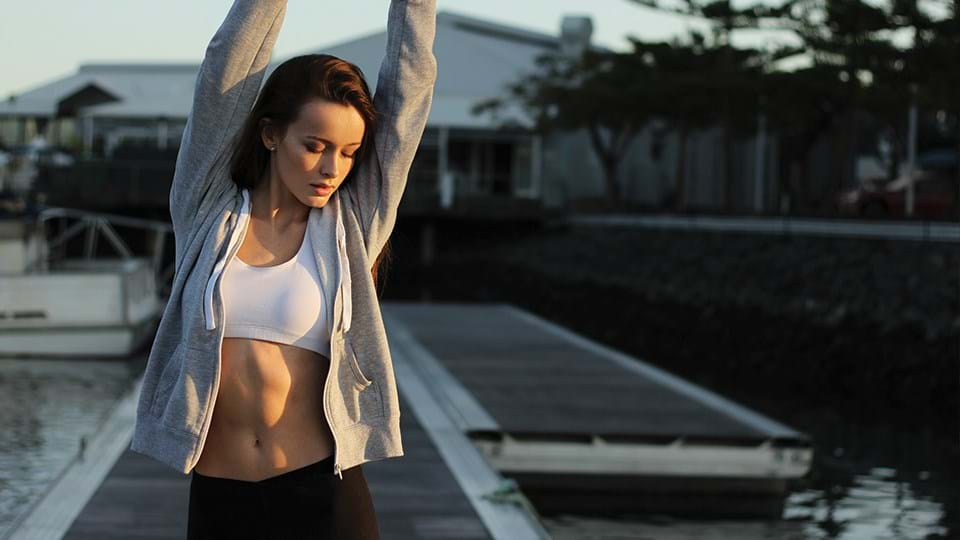
What sort of psychological mechanisms?
Such as exercise distracting you from whatever is worrying you, from ruminating on what might or might not happen. So just pulling yourself away from that and focusing on other things can mediate stress and anxiety.
But it depends on the type of exercise. Social connections and support helps reduce stress and anxiety, and exercise is often done with other people. And the psychological benefits you get from hanging out with friends can be magnified if it’s combined with some kind of physical activity. So if you go on a walk with friends, that’s going to have more of an effect on anxiety and stress than sitting down and having a coffee with them.
When health researchers talk about the cognitive and psychological benefits of exercise, they tend to emphasize the importance of cardiovascular exercise, of getting the blood pumping and the heart rate going …
That’s the fitness hypothesis, which says that the mental health benefits of exercise are based on changes in fitness, and that you have to reach a certain physiological change for mental health benefits to occur. But that’s just not the case. You don’t have to get to a certain level of fitness to get either the immediate or the long-term benefits of exercise.
There are definitely benefits to becoming fitter, both physical and mental, but there is a risk of underselling the benefits of low intensity activity. Knowing that if you just go for a walk, you’re going to feel better, is much less daunting.
There’s a huge body of evidence for the benefits of walking, so it’s important that we don’t undersell that. Any exercise is better than none, especially if you’re looking for quick relief; the benefits are quite quick when you get active, even if you’re just walking.
What about the idea that by physically stressing your body, it will make both body and mind more resilient?
New evidence is suggesting that exercise helps you manage stress, not only because your body is better able to cope with that activated feeling, at a physiological level, but also at a psychological level.
The way you’re thinking and feeling affects your physical states; you can feel it in your stomach, and head, you’re heart rate. So, if you have somatic symptoms – like your heart is racing fast – and you’re always associating that with anxiety or stress, it can make you more stressed and anxious. Whereas if you’re used to it in a more positive way – your heart is racing because you’re doing physical activity and it’s fun – you may learn to associate that feeling with something that feels rather good. So some of the somatic symptoms of stress won’t stress you out so much.
Presumably there are behavioral factors involved too? If your waistline starts shrinking, your strength and stamina increases, you’re might start to feel more in control of your body, and possibly your life.
That feeling of being in control has huge benefits. But this isn’t because your waistline is reducing or your strength is increasing, rather the fact that you are achieving your behavioral goals – that you’re getting out walking every day, or enjoying friends in an active environment. That’s a feeling we call “perceived control”. You remember that you can control the way you think and what you do.
So the more you engage in activity day after day, the more in control of your behavior you feel, and that generalizes beyond exercise, and make you feel more in control of the rest of your life.
The beauty of exercise and motivation is that it’s cyclical. If you get up and do it, you’re going to be motivated to do it for longer and do it again. And the more you do it, the easier it will be to do, and the more benefits you’ll get from it.
Your own research is about motivation – how to motivate people to exercise. How do you motivate people who aren’t particularly motivated to exercise?
I’m really against giving a recommended amount. More is better than what you’re doing now, and any is better than none. And do what you enjoy, something that you’ll look forward to doing.
There are numerous campaigns telling people that exercise is medicine, that it will help them from developing mental or physical health disorders, but that isn’t getting people off the couch. It has got to be something you want to do, something that is easy to do and becomes second nature over time.
You don’t want to treat exercise as something that has to be done, something you have to cram into an already busy day. That’s only going to make you feel busier and more stressed. You want to do it in a way that makes your life more efficient, such as walking instead of driving, or have a meeting while you’re walking.
FLORIDA: www.scwfit.com/florida
ATLANTA: www.scwfit.com/atlanta
Spring into fitness and lighten your load with the SCW Spring Guide – Discounts, Extras, & Updates are included in this Virtual Magazine of offers and exclusives, from products to programming!
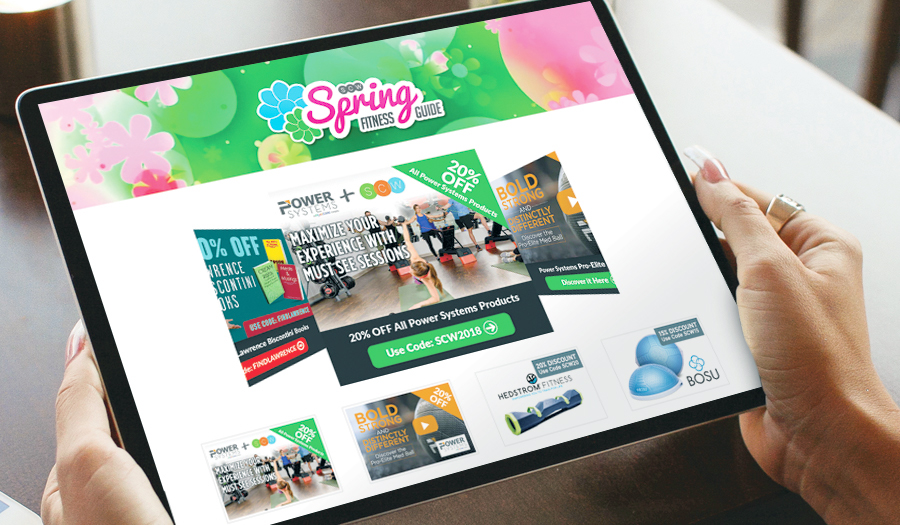 What better way to Spring into Fitness than some great deals on the items to help you achieve all of your goals? When we start thinking of ways to get fit and eat healthier, the warmer weather and thoughts of Spring cannot help but push us! SCW has put together an exclusive “Spring Into Fitness” Guide to help ensure you reach each and every one of those goals, all while saving money for summer vacations.
What better way to Spring into Fitness than some great deals on the items to help you achieve all of your goals? When we start thinking of ways to get fit and eat healthier, the warmer weather and thoughts of Spring cannot help but push us! SCW has put together an exclusive “Spring Into Fitness” Guide to help ensure you reach each and every one of those goals, all while saving money for summer vacations.
Here’s just a taste of what you’ll find inside our Spring Into Fitness Guide exclusively for SCW Fitness Education subscribers. Offered by a variety of premium companies, these discounts are made specifically to ensure a healthier, happier you:
– Valuable savings on Group Exercise and Personal Training equipment
– Half-price Certifications
– Membership exclusives
– Discounted apparel and accessories
– Videos and Literature
– And much more!
Check out the guide at: www.scwfit.com/SpringGuide
FLORIDA: www.scwfit.com/florida
ATLANTA: www.scwfit.com/atlanta
“Simple, simple, simple!” -Mindy Mylrea
FLORIDA: www.scwfit.com/florida
ATLANTA: www.scwfit.com/atlanta






